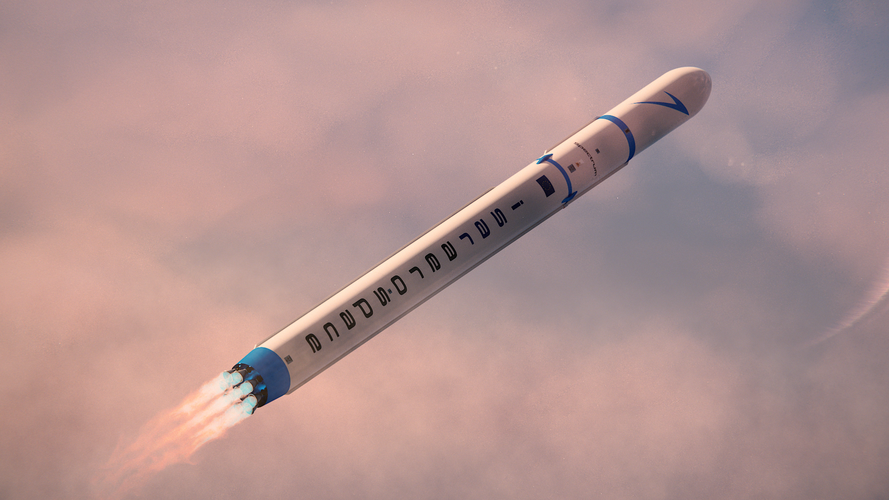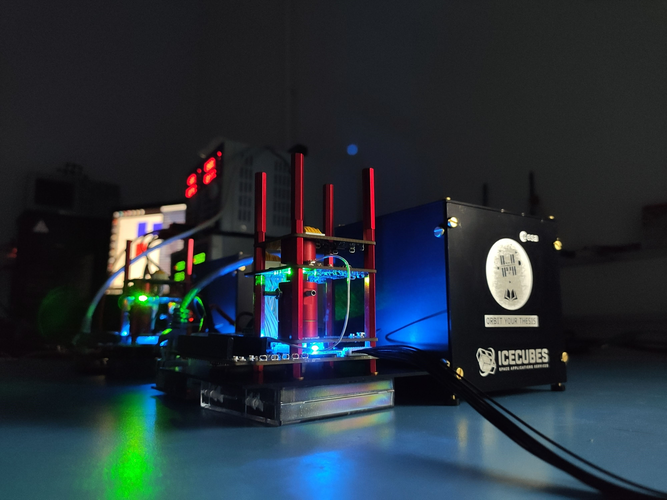
Copernical Team
Dark Energy Camera captures detailed view of striking peculiar galaxy

'X-ray magnifying glass' enhances view of distant black holes

By taking advantage of a natural lens in space, astronomers have captured an unprecedented look at X-rays from a black hole system in the early universe.
This magnifying glass was used to sharpen X-ray images for the first time using NASA's Chandra X-ray Observatory. It captured details about black holes that would normally be too distant to study using existing X-ray telescopes.
Astronomers applied a phenomenon known as "gravitational lensing" that occurs when the path taken by light from distant objects is bent by a large concentration of mass, such as a galaxy, that lies along the line of sight. This lensing can magnify and amplify the light by large amounts and create duplicate images of the same object. The configuration of these duplicate images can be used to decipher the complexity of the object and sharpen images.
The gravitationally-lensed system in the new study is called MG B2016+112.
The forecast for Mars includes otherworldly weather predictions

As scientists prepare for crewed research missions to nearby planets and moons, they've identified a need for something beyond rovers and rockets.
They need accurate weather forecasts. Without them, any trip to the surface may be one duststorm away from disaster.
A new Yale study helps lay the foundation for more accurate, otherworldly forecasts by taking a phenomenon related to Earth's jet stream and applying it to weather patterns on Mars and Titan, Saturn's largest moon. The study appears in the journal Nature Astronomy.
"I believe the first accurate forecasts of perhaps a few Mars days may be only a decade away," said lead author J. Michael Battalio, a postdoctoral researcher in Earth and planetary sciences in Yale's Faculty of Arts and Sciences. "It is just a matter of combining better observational datasets with sufficiently refined numerical models.
"But until then, we can rely upon connections between the climate and weather to help anticipate dust storms."
On Earth, the regularity of storm systems in the middle latitudes is associated with what is called an annular mode—a variability in atmospheric flow that is unrelated to the cycle of seasons.
Announcement of opportunity to fly payloads on Spectrum microlauncher

Announcement of opportunity to fly payloads on Spectrum microlauncher
Oscar the Qube
 Image:
Image:
Quantum technology or stage at a music festival? Both would have one thing in common: students.
Oscar-Qube, short for Optical Sensors based on CARbon materials: QUantum Belgium, is an experiment developed by a group of students from the University of Hasselt, Belgium. Part of ESA Education Office’s Orbit Your Thesis! programme, the experiment arrived at the International Space Station on Space X Dragon CR23 resupply mission yesterday.
This week, ESA astronaut Thomas Pesquet will install the experiment in the Ice Cubes Facility that offers commercial and educational access to the microgravity environment of the Space Station.
Oscar-Qube’s mission is
State of Russia's ISS segment sparks safety concerns

In recent years, the Russian segment of the ISS has experienced a string of problems, including air leaks caused by cracks, raising questions about the safety of the rotating crews onboard.
"Around 80 percent of the inflight systems on Russia's segment have reached the end of their service period," Vladimir Solovyov, chief engineer of the Energia rocket and space corporation, told the RIA Novosti news agency.
Energia—a manufacturer of spacecraft and space station components—is the leading developer of Russia's section of the ISS, a joint venture with the United States, Canada, Japan and the European Space Agency.
"This means that literally a day after the systems are fully exhausted, irreparable failures may begin," Solovyov added.
Citing concerns stemming from ageing hardware, Russia had previously indicated that it plans to leave the ISS after 2025 and launch its own orbital station.
On Monday, Solovyov said that small cracks had been discovered on Russia's Zarya cargo module.
Air Force selects Ohio base for new Cyber Warfare Wing
 The U.S. Air Force has selected the 179th Airlift Wing base in Mansfield, Ohio, as the location for the Air National Guard's first Cyber Warfare Wing.
Col. Todd Thomas, 179th Airlift Wing commander, said in a press release Thursday it would be a difficult transition, but a change that he strongly believes the airmen can make.
"Since becoming the wing commander, I have always told
The U.S. Air Force has selected the 179th Airlift Wing base in Mansfield, Ohio, as the location for the Air National Guard's first Cyber Warfare Wing.
Col. Todd Thomas, 179th Airlift Wing commander, said in a press release Thursday it would be a difficult transition, but a change that he strongly believes the airmen can make.
"Since becoming the wing commander, I have always told Russia confident in arms industry despite 'hostile' US sanctions
 Russia said Tuesday it was confident for the future of its arms industry even though the country faces what a senior official described as "unfair competition" and sanctions from the United States.
Moscow in recent years has worked to expand military partnerships abroad, a trend that has spurred criticism and concerns from Western capitals.
"We are doing everything we can to maintain our
Russia said Tuesday it was confident for the future of its arms industry even though the country faces what a senior official described as "unfair competition" and sanctions from the United States.
Moscow in recent years has worked to expand military partnerships abroad, a trend that has spurred criticism and concerns from Western capitals.
"We are doing everything we can to maintain our Netherlands completes deal to buy PAC-3 missile defense units
 US and Dutch officials recently formalized an agreement for the Netherlands to purchase Lockheed Martin's PAC-3 Missile Segment Enhancement (MSE) interceptors and related support equipment. With the signing, the Netherlands becomes the 12th customer of PAC-3 MSE and advances its missile defense technology from the PAC-3 Cost Reduction Initiative (CRI) the country acquired in 2004.
"We're h
US and Dutch officials recently formalized an agreement for the Netherlands to purchase Lockheed Martin's PAC-3 Missile Segment Enhancement (MSE) interceptors and related support equipment. With the signing, the Netherlands becomes the 12th customer of PAC-3 MSE and advances its missile defense technology from the PAC-3 Cost Reduction Initiative (CRI) the country acquired in 2004.
"We're h In a first, scientists capture a 'quantum tug' between neighboring water molecules
 Water is the most abundant yet least understood liquid in nature. It exhibits many strange behaviors that scientists still struggle to explain. While most liquids get denser as they get colder, water is most dense at 39 degrees Fahrenheit, just above its freezing point. This is why ice floats to the top of a drinking glass and lakes freeze from the surface down, allowing marine life to survive c
Water is the most abundant yet least understood liquid in nature. It exhibits many strange behaviors that scientists still struggle to explain. While most liquids get denser as they get colder, water is most dense at 39 degrees Fahrenheit, just above its freezing point. This is why ice floats to the top of a drinking glass and lakes freeze from the surface down, allowing marine life to survive c 
